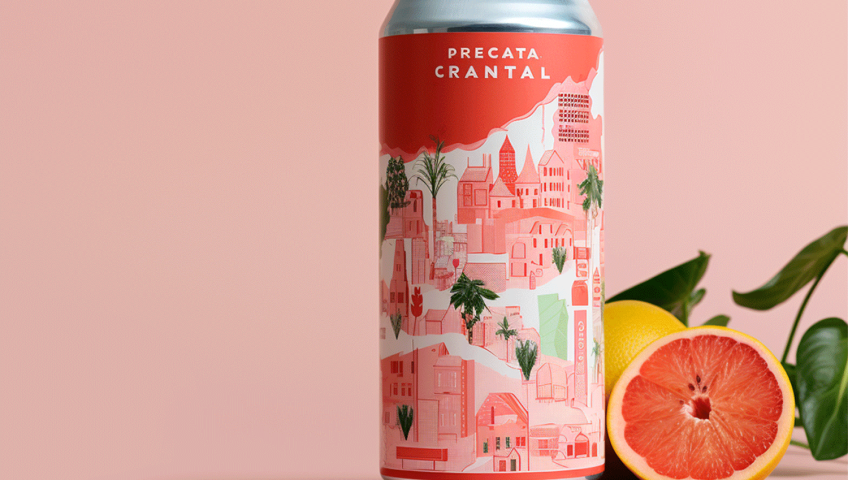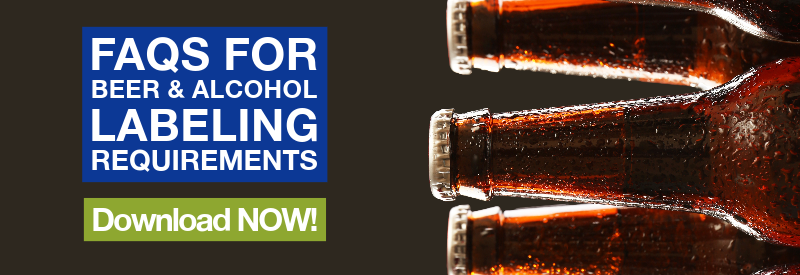
Are Canned Cocktail Label Guidelines Different Than Other Alcoholic Beverages?
While hard seltzers have seen a massive boom in the past few years, they’re part of a bigger trend toward Ready to Drink (RTD) beverages. Before you sell any new alcoholic beverage, you need approval from the Alcohol and Tobacco Tax and Trade Bureau (TTB). However, there are unique requirements for canned cocktail labels, and you may need additional paperwork to get approval. Here’s what it takes to get your new beverage to meet regulations.
What Are RTD Beverages?
In 2020, people turned to RTD cocktails when bars closed during the pandemic. Years later, this demand isn’t going anywhere. According to NielsenIQ, the largest growth in the segment has centered on hard sodas, hard iced teas, and wine-based cocktails.
What started as spiked sparkling water popularized by White Claw turned into a phenomenon of canned craft cocktails. Some distilleries started selling fan favorites like gin & tonics and rum & cokes in RTD cans. While ready-to-drink beverages spiked in popularity when people were stuck in their homes, the reopening of bars and restaurants has welcomed this new way of drinking with open arms. Customers can order an RTD cocktail at a bar, where the bartender can just grab it from the fridge instead of making it for even faster service.
How Are Ready-to-Drink Cocktails Categorized?
Alcoholic beverage retailers are entering the RTD market more and more, but before you start, you need to know how to categorize your craft cocktail in a can. TTB divides alcoholic beverages into classes and types. Both the class and type must be included on the front label. The TBB has a recognized cocktail list, covered in Chapter 4 of the Beverage Alcohol Manual (BAM).
Recognized Cocktail List
-
- Apricot Sour
- Black Russian
- Bloody Mary
- Brandy Alexander and variations with different spirits
- Daiquiri and variations with different spirits
- Egg nog
- Gimlet and vodka gimlet
- Grasshopper
- Mai Tai
- Manhattan
- Margarita
- Martini and vodka martini
- Mint julep
- Old Fashioned
- Pink Squirrel
- Screwdriver
- Sloe gin fizz
- Tom Collins and variations with different spirits
- Wallbanger
- Whiskey sour and variations with different spirits
- White Russian
If you call your beverage one of these names, you must use the exact ingredients specified in the BAM. For example, a margarita must contain tequila, triple sec and juice, or natural flavors from lemons or limes. However, you can get around this restriction by using a slightly different name for the cocktail in the brand name while declaring a different class on the label. For example, a wine-based product designed to taste like a margarita can be called a “margarita cocktail.” If the ABV is 6% or less, the class and type of beverage classify it as a “wine product.”
Wine that is less than 7% alcohol and beer that isn’t made with malted barley and hops, including sugar brew, fall under FDA regulation. That means you also need to include FDA-compliant information, including a Nutrition Facts label. These may differ between drinks like craft beers and hard seltzers.
What About Mocktails?
If you’re making a malt beverage with less than 0.5% alcohol, you must submit lab test results to the TTB to verify it is under this alcohol content threshold. Once approved, you need to follow FDA product regulations. If alcohol is removed from the product before sale, you still need to follow TTB labeling regulations. All other drinks fall solely under FDA regulation.
What Is a Flavor Ingredient Data Sheet, and Do I Need to Submit One?
Most packaged cocktails use flavorings that require a Flavor Ingredient Data Sheet (FID sheet or FIDS) for approval. Information for the FIDS should be available from your ingredient supplier. An FIDS covering all flavors should be submitted alongside your drink formula for approval by the TDD.
FIDS Required Information
-
- The manufacturer
- The flavor name (for example, grapefruit or cranberry)
- The required drawback number. The drawback is spirit tax money that is returned to the producer when spirits are used for non-beverage purposes. This includes extracts used as flavorings.
- The alcohol content of the beverage
- Natural and artificial ingredient designations
- The maximum usage rate for products on the TTB’s limited ingredients list, includes caffeine, vanillin, propylene glycol, and preservatives.
Much of this information is also required on your canned cocktail labels. An FIDS isn’t required for alcoholic beverage production that uses “traditional” methods of production, including the following:
-
- Pasteurization
- Filtration before bottling or in place of pasteurization
- Centrifuging for clarity
- Lagering
- Carbonation
- Blending
What Information Do I Need for My Canned Cocktail Labels?
Labels must be approved by submitting a Certification of Label Approval (COLA) to the TTB. Regulations covering labels are in the TTB’s Beverage Alcohol Manual (BAM).
For the most part, RTD beverages follow the same regulations as other spirits labels. While there are categories and types for wine, beer, and malt-based beverages, any spirit cocktail that isn’t one of the recognized cocktails falls under the distilled spirits specialty class. There are no defined types under this class. The class and type must be printed on the front label.
These pieces of information are required on your cocktail label if they apply to your product:
- Disclosure of any color additives, plus a separate disclosure for beverages that use FD&C Yellow #5
- Flavoring with wood, unless it was barrel aged, or you use brandy infused with oak chips
- Saccharin disclosure and sulfite declaration
- Statements of age are required for whiskey less than four years old, most brandy less than two years old, and any other distilled spirit whose age or distillation date is printed on the label.
- Whiskey made in the United States must declare the state where the product was distilled, even if it uses a region-specific name, like bourbon.
Ingredient List
Ingredients must be listed on the front of the bottle, and each ingredient must be given the same emphasis. You cannot use large or bold text to draw attention to more appealing ingredients like premium spirits or natural flavors. Unlike distilled spirit specialties, the ingredient list must start with the phrase “Made with.” For example, a margarita might have “Made with Tequila, Triple Sec Liqueur, Natural Flavors and Certified Colors” printed on the front label.
While not required, you can also add certain acknowledgments that your beverage is categorized as, such as gluten-free or certified organic.
Get a Labeling System That Fits Your Beverages
Selling canned RTD beverages, whether craft beer, hard seltzer, or spiked iced tea, means your label design has to draw in customers while meeting every regulatory requirement. CTM Labeling Systems makes applying these labels easy so that you can increase your production without sacrificing quality. Contact us to be put in touch with your local distributor. They make applying your canned cocktail label as easy as ever.





